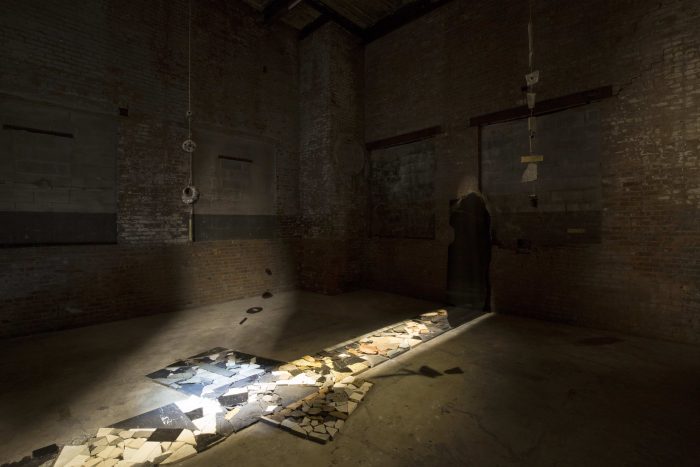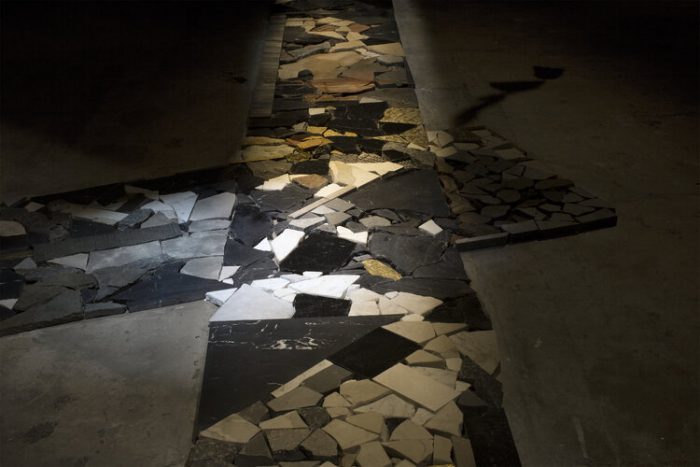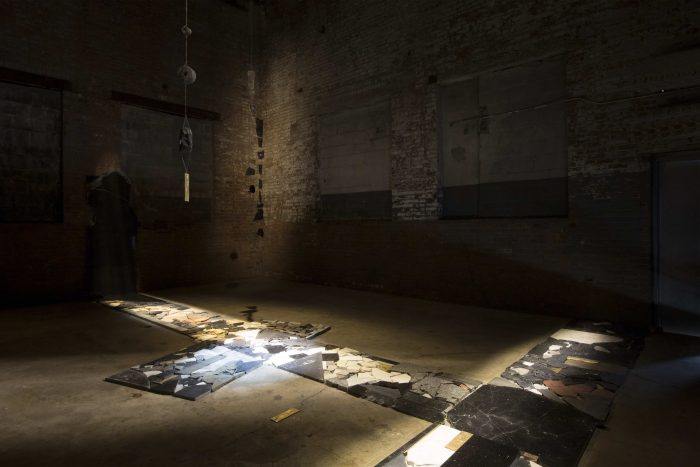Tiempo de lectura: 5 minutos

15.10.2019
The Chimney, New York, USA
9 de septiembre de 2019 – 19 de octubre de 2019



Terremoto is pleased to present the exhibitions selected for Terremoto Art Weekend NYC 2019, an initiative gathering more than 20 institutions, galleries and spaces in New York City featuring Latin American, Latinx and Afrodescendant artists. If you are in town, make sure you rsvp for a group walkthrough of each show at rsvp@terremoto.mx and stay tuned on our social media. Our full program here
—
The Chimney: In your exhibition Small landscapes from near and far, you have brought stones from various sites to bring in two geographies, New York and Mexico City. Could you describe this exhibition and how the space of The Chimney influenced your installation?
Perla Krauze: The Chimney is indeed a particular site.
The space itself contains such a strong memory of its past, which made me want to respect and experience it at the same time.
The questions was about how to make an installation that speaks to the space, reveals it and makes it glow. I wanted to do justice to this small, contained, out-of-the-ordinary brick construction, that is almost spiritual and contemplative.
From photographs only, the space already appeared special to me. I decided to travel for 5 days in July to do some on-site research and explore its specificities and the neighbourhood. The Chimney is located in a special environment within New York: it is in the industrial area in Bushwick, Brooklyn. I walked and photographed the streets, walls, graffiti and street art and throughout these walks, I continuously saw marks and traces, that make this space so unique. It was clear from the beginning that the scale of The Chimney felt almost monumental even if it is not in reality that huge. The height made me think that I needed to relate if possible to the floor but also be able to look up to feel the whole space.
As I looked more closely, I saw many marks and imprints everywhere. It became evident that I needed to let those marks and imprints speak for themselves. I noticed that a preexisting path, unintentionally drawn on the floor, could take visitors kind of nowhere… I started to follow it by placing a few pieces of small stones I brought from Mexico.. I also saw the small cracks on the walls, floors, which I casted then in silicon to bring back to Mexico to produce small “landscapes” with other materials such as color resin and bronze.
TC: The Chimney space really influenced the installation, became site specific completely. In your work, stones hold the memory of the places you’ve encountered on your path. What retains your attention?
PK: For me stones indeed hold memories—a geological memory, historical, a mythical one too. As a result, they hold the memory from the site and place they are placed and come from. Throughout my road trips or visits to the quarries, I encounter and collect stones from Mexico city, Oaxaca, New Mexico and the South West. In this particular case I did encounter scraps of stones in Brooklyn and Greenpoint. I decided to find stones from the local vicinity and neighbourhood, and it turned to be quite a discovery. I walked around the area and found fabrication workshops for kitchen and bathroom countertops, stores where one could see extraordinary beautiful slabs of stones imported from Turkey, Italy, Brazil, China and other latitudes for the sophisticated taste in the design industry. I think about these stones as geographies, topographies but also I consider their geological movements and issues tied to displacements as a whole – from migration flows, cultural development to the micro movements of the earth-crusts.
I see materials as an expression of the place where they come from. My attention is generally focused on the overlooked, probably cracks of the floors that nobody sees, so I decide to make them visible again through small or large interventions.
TC: How does the idea of migration and geographical borders play out in your work?
PK: Migration and geographical borders are such important subjects nowadays in the world we live in. This is an issue that involves Mexico but most importantly, it is a global one. I tend to imagine my works as becoming multi-cultural pieces where fragments are trying to become a harmonious whole where one can walk in a careful way… Therefore, I am very interested in identity and locality.
The objective of the exhibition was to “migrate stones” from my country Mexico as well as other countries to Brooklyn. This migration is accepted: frontiers are less difficult to cross to become part of an industrial design.
TC: How is this exhibition inspiring you for your future projects?
PK: As a multicultural piece, it has left an imprint on me and I believe it will continue to. It feels that I am speaking of other issues too that overlap with the physicality of the path, the slow pace you need to spent walking carefully, giving time to contemplate and feel diversity though fragmented very simple materials that become a harmonious whole.
The idea of the “path” aligns with my previous works, that tried to record the ephemeral and impermanent as well as the resilience of space, symbolized by local materials found in the environment.
The craftsmen working with these materials are also taken into account. They are not indifferent to me, nor is their labor: they work intensive hours per day, and this very labor leaves traces of memory in the objects. This project will probably lead me to pursue projects that have a subtle way to address issues related to our world transformation and issues tied to ecology and migration. The world has become less flexible due to the complex number of borders. I feel the need to address these issues of identity in a more contemplative, subtle yet powerful way.
—
https://www.thechimneynyc.com/
Comentarios
No hay comentarios disponibles.